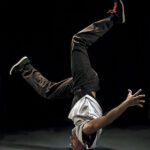Hula dance, a captivating art form steeped in Hawaiian tradition, is more than just swaying hips and graceful hands. Dive into the rich history, diverse styles, and profound cultural significance of hula with ten-dance.com, where we make the world of dance accessible and exciting. Ready to discover the mesmerizing beauty of hula dance and enhance your appreciation for Hawaiian culture? Let’s explore the rhythmic movements, the storytelling, and the vibrant spirit of aloha that makes hula so unique, along with the hula preservation, and cultural dances.
1. Decoding Hula: More Than Just a Dance
What exactly is hula dance? Hula is a vibrant storytelling dance from the Hawaiian Islands, more than mere entertainment; it is the heart of Hawaiian culture. Each movement, gesture, and chant weaves together narratives of history, mythology, genealogy, and the natural world, making it a profound expression of Hawaiian identity.
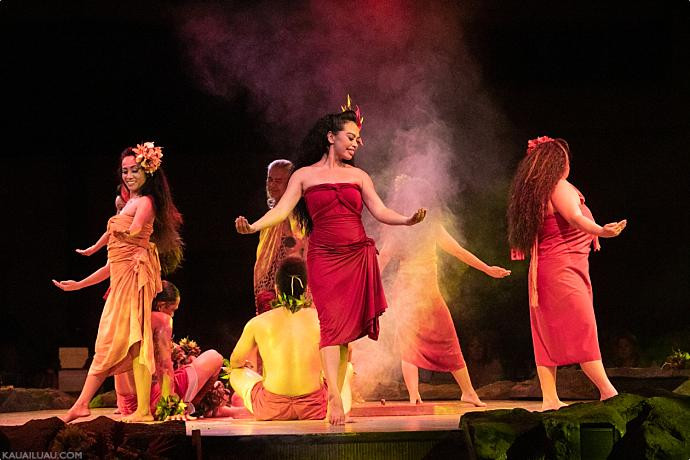 Hula Dancer in Traditional Dress Reflecting the Essence of Hawaiian Storytelling Through Movement
Hula Dancer in Traditional Dress Reflecting the Essence of Hawaiian Storytelling Through Movement
Hula is also a unique dance characterized by graceful arm movements and fluid steps, which serve as the language of this art form. The gestures represent everything from the elements and the stars to plants, animals, and human emotions. It’s a living, breathing history book, preserving the stories and traditions of the Hawaiian people.
1.1. The Essence of Aloha in Hula
Beyond its storytelling capabilities, hula embodies the spirit of Aloha, a concept that encompasses love, compassion, and harmony. Each performance reflects a deep connection to the land (‘āina) and the spiritual world. It celebrates life, community, and the interconnectedness of all things, which is a powerful reminder of the values at the heart of Hawaiian culture.
1.2. Why Hula Resonates Across Generations
Hula transcends age and background, captivating audiences with its beauty and depth. It’s a way for Hawaiians to connect with their heritage, and for others to experience the unique cultural treasures of the islands. Whether you’re a seasoned dancer or a curious observer, hula offers a window into a world of ancient traditions and vibrant expression.
2. The Historical Roots of Hula: From Sacred Ritual to Cultural Icon
What are the origins of hula dance? The origins of hula are intertwined with the legends and spirituality of ancient Hawaii, evolving from sacred rituals to become a cherished cultural icon. Passed down through generations, hula served as a vital means of preserving history, genealogy, and mythology in a pre-literate society.
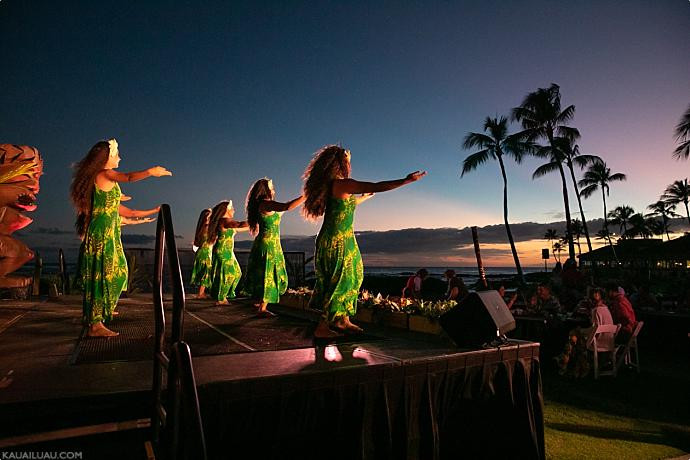 Sunset Silhouette of a Hula Dancer Evoking the Mystical Origins of the Dance in Hawaiian Culture
Sunset Silhouette of a Hula Dancer Evoking the Mystical Origins of the Dance in Hawaiian Culture
2.1. Legends of Creation: Pele, Hi’iaka, and Laka
The creation of hula is often attributed to various deities, each with their own unique connection to the dance. Some legends credit Pele, the goddess of volcanoes, as the creator of hula, while others attribute it to her sister, Hi’iaka, who is said to have been the first dancer. Still others credit Laka, the goddess of hula, fertility, and the forest. These varied origin stories reflect the diverse traditions and beliefs across the Hawaiian Islands.
2.2. Hula as a Form of Worship
In ancient Hawaii, hula was not merely a form of entertainment, but a sacred ritual performed to honor the gods and ancestors. Every performance was preceded and followed by prayers and chants, underscoring the spiritual significance of the dance. Hula was an integral part of religious ceremonies, celebrating life, fertility, and the natural world.
2.3. The Impact of Western Influence: Suppression and Revival
The arrival of missionaries in the 19th century brought significant changes to Hawaiian society, including the suppression of hula. Deemed vulgar and immoral, public performances were banned, and hula schools were forced to close. However, the dance persisted in secret, kept alive by dedicated practitioners in rural villages.
A turning point came in 1883 with King David Kalakaua, known as the “Merrie Monarch,” who revived hula and other Hawaiian traditions during his coronation. This cultural renaissance, though short-lived due to the overthrow of the Hawaiian Kingdom in 1893, paved the way for the dance’s eventual resurgence in the 20th century.
2.4. The Tourist Era: Stereotypes and Transformation
As tourism increased in the 20th century, hula underwent further transformation. Luaus catered to tourists often featured a “whitewashed” version of the dance, with performers in coconut bras and cellophane skirts. This commercialization led to the perpetuation of stereotypes and a diminished understanding of hula’s true cultural significance.
2.5. The Hawaiian Cultural Revival: Reclaiming Hula
The 1970s marked a turning point in the preservation of Hawaiian culture. The state constitution was amended in 1978 to include Hawaiian as an official language, and schools were mandated to teach Hawaiian history, language, and culture, including hula. This cultural revival led to a renewed interest in traditional hula and a rejection of the commercialized stereotypes.
2.6. The Evolution of Luaus: Authenticity and Education
In recent decades, many luaus have shifted their focus from kitsch entertainment to authentic Hawaiian dance and costumes. Some luaus, like the Old Lahaina Luau, prioritize traditional hula, educating audiences about its history and cultural significance. This shift reflects a growing awareness and appreciation for the true essence of hula.
3. Hula Kahiko: Embracing Tradition
What defines Hula Kahiko? Hula Kahiko is the ancient, traditional form of hula, deeply rooted in Hawaiian spirituality and history, characterized by powerful movements, rhythmic chanting, and traditional instruments. This revered style of hula is a direct link to the past, preserving the stories and beliefs of ancient Hawaii.
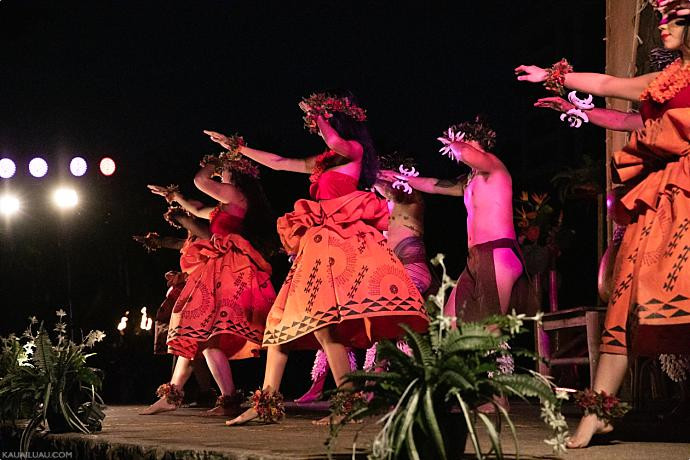 A Hula Kahiko Performance Showcasing Traditional Instruments and Costumes
A Hula Kahiko Performance Showcasing Traditional Instruments and Costumes
3.1. The Instruments of Hula Kahiko
Hula Kahiko relies solely on percussion instruments to create its distinctive sound. The most common instrument is the ipu heke, a double gourd drum that provides a rhythmic heartbeat to the dance. Other instruments include the pahu (sharkskin drum), ‘uli’uli (feathered gourds), and kala’au (rhythm sticks). These instruments create a mesmerizing soundscape that accompanies the dancers’ movements and chants.
3.2. The Role of the Kumu Hula
The kumu hula, or hula teacher, plays a central role in Hula Kahiko. As the chanter, the kumu hula leads the performance, reciting ancient poems and stories in Hawaiian. The kumu hula also guides the dancers, ensuring that each movement is performed with precision and respect for tradition. Their knowledge and expertise are essential to preserving the authenticity of Hula Kahiko.
3.3. Traditional Attire
The attire worn in Hula Kahiko is steeped in tradition and symbolism. Female dancers typically wear a paʻu, a skirt made from kapa (bark cloth), ti leaves, or lauhala (dried pandanus leaves). Men often wear a malo, a loincloth. Adornments include greenery such as ferns, leis (garlands of flowers or leaves), and kupe’e (bracelets or anklets). These costumes connect the dancers to the natural world and the spiritual realm.
3.4. The Meaning Behind the Movements
Every movement in Hula Kahiko has a specific meaning, representing elements of nature, historical events, or mythological figures. The dancers’ hands tell stories, their feet connect them to the earth, and their bodies express the emotions and experiences of their ancestors. The movements are precise and deliberate, reflecting the deep respect for tradition that is central to Hula Kahiko.
3.5. Experiencing the Power of Hula Kahiko
Witnessing a Hula Kahiko performance is a powerful and transformative experience. The rhythmic chanting, the mesmerizing movements, and the traditional attire transport audiences to a time when hula was a sacred ritual. It’s a chance to connect with the ancient roots of Hawaiian culture and appreciate the enduring power of tradition.
4. Hula ʻAuana: Embracing Modernity
What sets Hula ʻAuana apart? Hula ʻAuana, the modern style of hula, blends traditional movements with contemporary music and themes, providing a creative expression of Hawaiian culture. This style allows for greater freedom and creativity, reflecting the evolving experiences of the Hawaiian people.
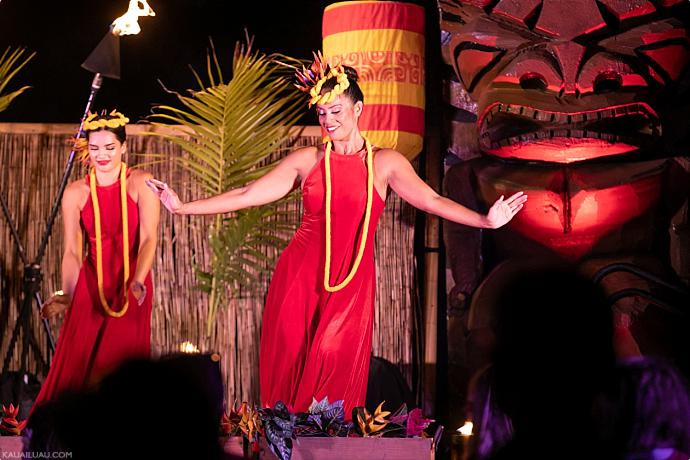 A Hula ʻAuana Performance Showcasing Modern Costumes and Musical Instruments
A Hula ʻAuana Performance Showcasing Modern Costumes and Musical Instruments
4.1. The Musical Accompaniment of Hula ʻAuana
Unlike Hula Kahiko, which relies on percussion instruments, Hula ʻAuana is accompanied by melodic instruments such as the ukulele, guitar, and bass. These instruments create a more contemporary sound, reflecting the influence of Western music on Hawaiian culture. The songs often tell stories of love, nature, and contemporary life.
4.2. Expressive Freedom in Costumes
Hula ʻAuana costumes allow for greater freedom and creativity. While male dancers typically wear pants, female dancers have a wider range of choices, from elegant dresses to skirts and tops. Some costumes are designed to depict a specific era, such as the cellophane skirts popular in the mid-1900s. The costumes are often adorned with flowers, leis, and other embellishments that reflect the beauty and vibrancy of Hawaiian culture.
4.3. The Evolution of Themes and Stories
Hula ʻAuana explores a wider range of themes and stories than Hula Kahiko. While traditional stories are still told, Hula ʻAuana also addresses contemporary issues, celebrates modern life, and expresses personal experiences. This evolution reflects the changing landscape of Hawaiian society and the desire to connect with audiences on a more personal level.
4.4. Embracing Innovation While Respecting Tradition
Hula ʻAuana embraces innovation while remaining rooted in Hawaiian tradition. The movements are still based on traditional hula steps, but they are often adapted and modified to suit the music and themes of the dance. This balance between tradition and innovation allows Hula ʻAuana to evolve and remain relevant to contemporary audiences.
4.5. Experiencing the Joy of Hula ʻAuana
Watching a Hula ʻAuana performance is an uplifting and joyful experience. The melodic music, the colorful costumes, and the expressive movements create a sense of celebration and connection. It’s a chance to appreciate the beauty and vitality of modern Hawaiian culture and experience the aloha spirit in action.
5. Where to Witness Hula: Immerse Yourself in the Culture
Where can you experience hula firsthand? From vibrant festivals to local luaus, hula performances offer an immersive glimpse into Hawaiian culture. Whether you’re planning a trip to the islands or seeking a cultural experience closer to home, there are many opportunities to witness the beauty and grace of hula.
5.1. The Merrie Monarch Festival: The Olympics of Hula
The Merrie Monarch Festival is the premier hula competition in Hawaii, attracting the finest hālau (hula schools) from across the state. Held annually in Hilo, the festival is a week-long celebration of Hawaiian culture, featuring performances of both Hula Kahiko and Hula ʻAuana. Tickets are highly coveted, but the festival is also broadcast live on television and online, allowing viewers around the world to experience the magic of Merrie Monarch.
5.2. Luaus: A Feast for the Senses
Luaus are a popular way to experience Hawaiian culture, offering a combination of traditional food, music, and dance. Many luaus feature hula performances, showcasing both Hula Kahiko and Hula ʻAuana. Some luaus prioritize authenticity, educating audiences about the history and cultural significance of hula. Look for luaus that feature kumu hula and dancers who are deeply committed to preserving Hawaiian traditions.
5.3. Cultural Centers and Museums
Cultural centers and museums throughout Hawaii offer opportunities to learn about hula and witness performances. These institutions often host workshops, demonstrations, and exhibitions that explore the history, traditions, and cultural significance of hula. They provide a more in-depth understanding of the dance and its role in Hawaiian society.
5.4. Local Events and Festivals
Keep an eye out for local events and festivals in Hawaii that feature hula performances. These events often showcase community hālau and offer a more intimate and authentic experience of hula. They provide an opportunity to connect with local dancers and learn about their passion for preserving Hawaiian culture.
5.5. Hula Schools and Workshops
If you’re interested in learning hula yourself, consider taking a class or workshop. Many hula schools in Hawaii offer lessons for visitors, providing an opportunity to learn the basic steps and movements of hula. These classes are a fun and engaging way to connect with Hawaiian culture and experience the joy of hula firsthand. Visit ten-dance.com to find local classes.
6. The Significance of Hula Gestures: Telling Stories with Your Hands
What stories do hula gestures tell? Every hand movement in hula conveys meaning, turning the dance into a visual narrative. From representing the swaying of trees to the crashing of waves, each gesture tells a story and enhances the emotional impact of the performance.
6.1. Nature
Many hula gestures depict elements of nature, such as plants, animals, and the environment. For example, a swaying hand might represent the gentle movement of leaves in the wind, while a cupped hand could symbolize a flower blooming. These gestures connect the dancers to the natural world and express their appreciation for its beauty and abundance.
6.2. Emotions
Hula gestures also convey a wide range of emotions, such as love, joy, sorrow, and anger. A gentle caress might represent affection, while a clenched fist could symbolize anger or determination. These gestures allow the dancers to express their feelings and connect with the audience on an emotional level.
6.3. Storytelling
Hula gestures are often used to tell stories, depicting historical events, mythological figures, or personal experiences. The dancers’ hands become the characters in the story, bringing the narrative to life through their movements. These gestures allow the audience to visualize the story and connect with it on a deeper level.
6.4. Symbolic
Some hula gestures have symbolic meanings, representing abstract concepts or spiritual beliefs. For example, a raised hand might symbolize reverence or prayer, while a circle formed with the hands could represent unity or eternity. These gestures add depth and complexity to the dance, inviting the audience to interpret its meaning on a personal level.
6.5. Cultural
Hula gestures are deeply rooted in Hawaiian culture and tradition. They reflect the values, beliefs, and customs of the Hawaiian people, preserving their history and identity through movement. These gestures connect the dancers to their ancestors and express their pride in their cultural heritage.
7. Hula as a Spiritual Practice: Connecting Mind, Body, and Spirit
How does hula nurture the spirit? Beyond its physical movements, hula is a spiritual practice that connects mind, body, and spirit. It’s a way to cultivate mindfulness, express gratitude, and connect with the divine.
7.1. Grounding
Hula helps dancers connect with the earth, grounding them in the present moment. The rhythmic movements and chanting create a sense of stability and balance, allowing dancers to release stress and anxiety. This grounding effect can promote a sense of calm and well-being.
7.2. Mindfulness
Hula requires focus and concentration, encouraging dancers to be present in their bodies and minds. The repetitive movements and chants can help quiet the mind and cultivate a sense of inner peace. This mindful awareness can extend beyond the dance, enhancing daily life.
7.3. Emotional Release
Hula provides a safe and supportive space for dancers to express their emotions. The movements and chants can help release pent-up feelings, allowing dancers to process their experiences and heal from emotional wounds. This emotional release can promote greater self-awareness and emotional well-being.
7.4. Gratitude
Hula is often performed as an offering of gratitude, expressing appreciation for the blessings in life. The movements and chants can help dancers connect with their sense of gratitude, fostering a more positive and optimistic outlook. This sense of gratitude can extend beyond the dance, enhancing relationships and overall life satisfaction.
7.5. Connection
Hula fosters a sense of connection, both to oneself and to others. The shared experience of dancing and chanting together can create a strong sense of community, promoting feelings of belonging and support. This connection can extend beyond the hālau, enhancing relationships and overall social well-being.
8. The Health Benefits of Hula: A Holistic Approach to Wellness
What are the health benefits of hula? Hula offers a holistic approach to wellness, enhancing physical, mental, and emotional health through rhythmic movement, cultural connection, and community engagement. This ancient dance form is not only a beautiful art but also a powerful tool for improving overall well-being.
8.1. Physical Fitness
Hula is a full-body workout that improves cardiovascular health, strength, and flexibility. The rhythmic movements engage muscles throughout the body, increasing stamina and coordination. Hula can also help improve posture and balance, reducing the risk of falls and injuries.
8.2. Mental Well-being
Hula promotes mental well-being by reducing stress, anxiety, and depression. The rhythmic movements and chanting can help quiet the mind, fostering a sense of inner peace and calm. Hula also provides an opportunity for self-expression, allowing dancers to release emotions and connect with their inner selves.
8.3. Emotional Health
Hula enhances emotional health by fostering a sense of connection, community, and cultural pride. The shared experience of dancing together can create a strong sense of belonging, promoting feelings of happiness and fulfillment. Hula also provides an opportunity to connect with one’s cultural heritage, strengthening identity and self-esteem.
8.4. Social Connection
Hula fosters social connection by bringing people together in a supportive and inclusive environment. The hālau provides a sense of community, where dancers can connect with others who share their passion for hula. This social connection can reduce feelings of loneliness and isolation, promoting greater overall well-being.
8.5. Cultural Preservation
Hula contributes to cultural preservation by passing down traditions, values, and customs from one generation to the next. By learning and performing hula, dancers help keep Hawaiian culture alive, ensuring that it continues to thrive for years to come. This cultural preservation strengthens identity and self-esteem, promoting a sense of pride in one’s heritage.
9. Joining the Hula Community: Find Your Hālau and Embrace the Culture
How can you become part of the hula community? Joining a hālau is the best way to immerse yourself in the world of hula, fostering a sense of belonging, and deepening your appreciation for Hawaiian culture. Whether you’re a beginner or an experienced dancer, there’s a place for you in the hula community.
9.1. Finding a Hālau
The first step to joining the hula community is to find a hālau that aligns with your values and goals. Look for a hālau that is led by a respected kumu hula and that offers classes for all levels of experience. Consider the location, schedule, and cost of classes, as well as the style of hula taught. Visit ten-dance.com to find local hula schools near you.
9.2. Attending Classes
Once you’ve found a hālau, attend classes regularly to learn the basic steps, movements, and chants of hula. Be patient and persistent, as it takes time and effort to master the art of hula. Practice regularly at home to reinforce what you’ve learned in class.
9.3. Participating in Performances
As you progress in your hula journey, consider participating in performances to share your passion for hula with others. Performances provide an opportunity to showcase your skills, connect with the audience, and contribute to the preservation of Hawaiian culture. Talk to your kumu hula about opportunities to perform with the hālau.
9.4. Volunteering
Volunteering is a great way to give back to the hula community and support the preservation of Hawaiian culture. Volunteer at hula festivals, luaus, or cultural centers to help with event planning, logistics, or education. Your contributions will make a difference in the lives of others and strengthen the hula community.
9.5. Connecting with Others
Connect with other hula dancers to share your experiences, learn from their insights, and build lasting friendships. Attend hula events, join online forums, or participate in social media groups to connect with fellow hula enthusiasts. Together, you can support each other and promote the beauty and cultural significance of hula.
10. Hula in the Modern World: Preserving Tradition in a Changing Landscape
How is hula adapting to the modern world? Hula continues to evolve, embracing new technologies and platforms while maintaining its deep connection to Hawaiian tradition. From online classes to virtual performances, hula is finding new ways to reach audiences and preserve its cultural heritage in a changing world.
10.1. Online Classes and Workshops
Online classes and workshops make hula accessible to people around the world, regardless of their location or experience level. These virtual learning opportunities provide a convenient and affordable way to learn the basics of hula, connect with kumu hula, and explore the cultural significance of the dance. Visit ten-dance.com to find online hula classes.
10.2. Virtual Performances
Virtual performances allow hula dancers to share their art with audiences worldwide, transcending geographical boundaries and cultural barriers. These online performances provide a platform for hālau to showcase their skills, connect with viewers, and promote the beauty and cultural significance of hula.
10.3. Social Media
Social media platforms provide a powerful tool for hula dancers to connect with each other, share their experiences, and promote the art of hula. Hula dancers use social media to post videos of their performances, share information about hula events, and engage with fans and followers.
10.4. Cultural Exchange Programs
Cultural exchange programs provide opportunities for hula dancers to travel to other countries, share their culture, and learn about other traditions. These programs foster cross-cultural understanding, promote global awareness, and strengthen the bonds between people from different backgrounds.
10.5. Educational Initiatives
Educational initiatives in schools and communities help promote the understanding and appreciation of hula among young people. These initiatives include hula classes, cultural workshops, and educational programs that teach students about the history, traditions, and cultural significance of hula.
Hula is more than just a dance; it’s a cultural treasure that embodies the spirit of Aloha. By exploring its history, styles, gestures, and health benefits, we can gain a deeper appreciation for this beautiful art form and its role in preserving Hawaiian culture. Whether you’re a seasoned dancer or a curious beginner, there’s a place for you in the world of hula. Join us at ten-dance.com to discover more about the world of dance, find classes, and connect with a community of passionate dancers. Explore your potential and discover the vibrant world of movement with us today.
Address: 60 Lincoln Center Plaza, New York, NY 10023, United States.
Phone: +1 (212) 769-7000.
Website: ten-dance.com.
FAQ: Unveiling the Mysteries of Hula
1. What is the difference between Hula Kahiko and Hula ʻAuana?
Hula Kahiko is the ancient, traditional form of hula performed with percussion instruments and chanting, while Hula ʻAuana is the modern style accompanied by melodic instruments and contemporary themes.
2. What is the significance of hula gestures?
Every gesture in hula conveys meaning, representing elements of nature, emotions, or stories. These gestures enhance the narrative and emotional impact of the dance.
3. How can I find a hula school near me?
Visit ten-dance.com to discover local hula schools and classes in your area. We offer a comprehensive directory of dance studios and instructors.
4. What are the health benefits of hula dance?
Hula improves physical fitness, reduces stress, enhances emotional well-being, fosters social connection, and contributes to cultural preservation.
5. What is a kumu hula?
A kumu hula is a hula teacher and master of Hawaiian traditions, responsible for preserving and passing down the knowledge of hula to future generations.
6. What is the Merrie Monarch Festival?
The Merrie Monarch Festival is the premier hula competition in Hawaii, showcasing the finest hālau from across the state in a week-long celebration of Hawaiian culture.
7. What is the role of hula in Hawaiian culture?
Hula is a central aspect of Hawaiian culture, serving as a form of storytelling, worship, and cultural preservation. It embodies the spirit of Aloha and connects people to their heritage.
8. Can anyone learn hula?
Yes, anyone can learn hula, regardless of age, background, or experience level. Hula is an inclusive art form that welcomes people of all abilities.
9. What should I wear to a hula class?
Wear comfortable clothing that allows for freedom of movement. Consult with your kumu hula for specific attire recommendations.
10. How can I support the preservation of hula?
Support the preservation of hula by attending performances, taking classes, volunteering at cultural events, and donating to organizations that promote Hawaiian culture.

